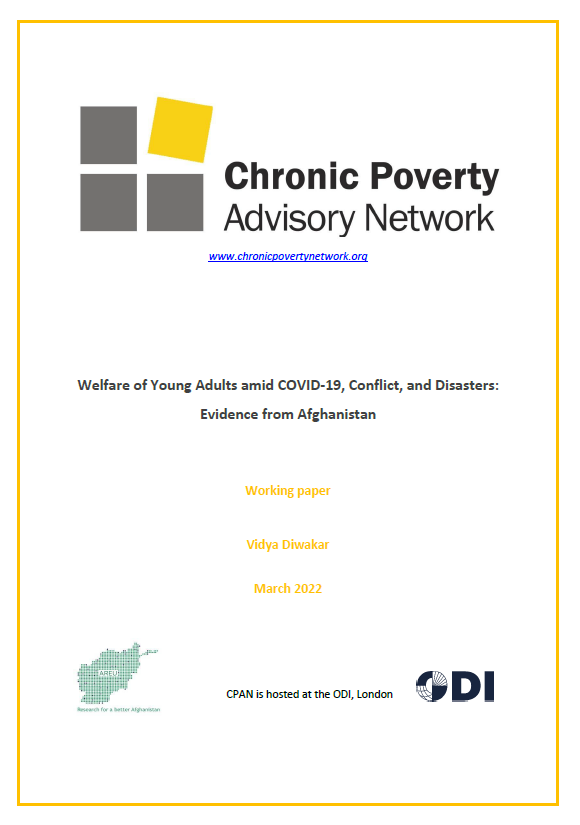Afghanistan has experienced decades of conflict-related insecurity and disasters, a situation that has been exacerbated by the onset of the novel coronavirus disease (COVID-19). This paper employs the Income, Expenditure, and Labour Force Survey (IE&LFS) 2019-20 to quantitatively analyse poverty and welfare loss in Afghanistan. This analysis hence covers the period before August 2021, offering an important baseline to examine deteriorating situations in subsequent years. It finds that rates of poverty and welfare loss increased during the onset of the pandemic, especially among poor households, potentially reflecting new impoverishment as well as destitution processes. Though these rates were comparable across age groups, in absolute terms, they represent approximately 4.7 million young adults living in poverty in 2019-20. Youth-headed households were disadvantaged in terms of a lower asset base. Though they had more years of schooling, and higher rates of salaried employment and migration that both helped protect against poverty, during COVID-19 they were more likely to record a temporary layoff, reflecting the precariousness of youth employment.
Disasters, insecurity, and a range of negative shocks and stressors alongside COVID-19 contributed to welfare loss, and, in some situations, were amplified during the pandemic. Many households reduced expenditures and the quality or quantity of food in response to these shocks, particularly during COVID-19. Food insecurity was a related consequence, heightened during the pandemic, especially among youth-headed households. Other responses common during COVID-19 included an increase in work-related strategies, potentially substituting a decline in social capital within the community. Though the rate of economic activities among women in general was strikingly low, there was a slight increase in employment during COVID-19 among women in poor households, and among women in households experiencing disasters or in insecure areas amid COVID-19. This may point to a potential narrowing of the gender differential in employment in crisis contexts, though this itself is a sign of distress where women in poverty may have no recourse but to engage in precarious work and uphold an increased work burden to meet household needs in times of distress.
Author: Vidya Diwakar
Paper can be downloaded here



